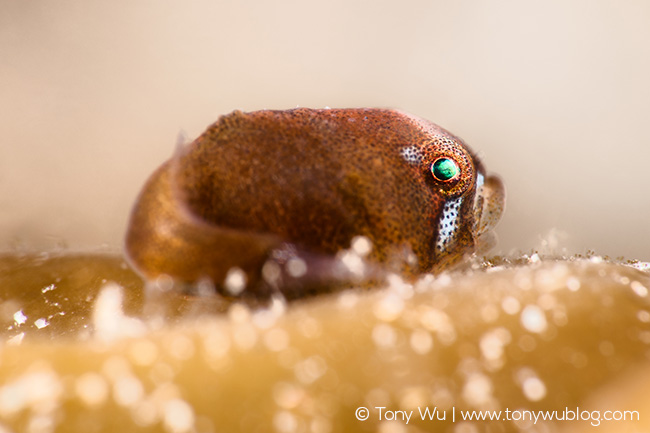In addition to spending a bit of quality time with Eumicrotremus uenoi recently, I had the opportunity to gawk at juveniles of another deepwater species, Aptocyclus ventricosus, also known as smooth lumpsuckers or smooth lumpfish (ホテイウオ).
Mature fish of this species live down to 1700m depth and are, to be as kind as possible, pulchritude-challenged. But the newborns can be adorable, like this little one that opened its mouth for me:
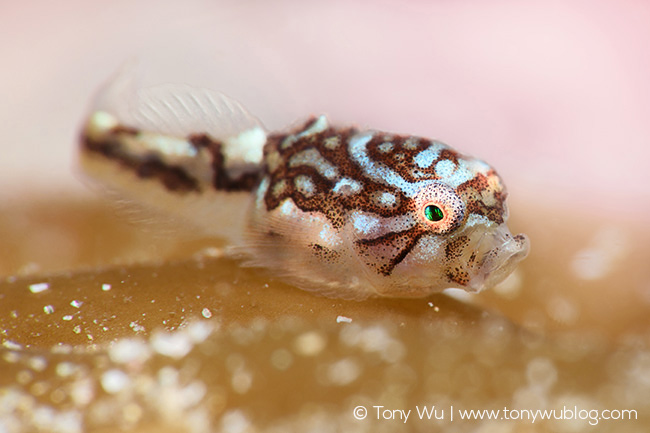
Recall that I moaned about how small E. uenoi are, around 3mm, and how they were thus such a pain to photograph. Fortunately, juvenile A. ventricosus are a lot bigger. They are 7-8mm. In percentage terms, that’s 133-167% increase, humongous if we were talking about the stock market.
In practical squint-threshold terms, it wasn’t really a big difference though.
I managed to catch one in the act of grabbing something to eat. Being little fish trying to become big fish, the juveniles snagged things continually. There were many animals in the water that looked like they might be larval crustaceans, so that might have been what the baby fish were hunting—though the larval things were so small and moving so frantically that they made both E. uenoi and A. ventricosus look like lumbering piscine Godzillas, so I couldn’t really tell what they were.
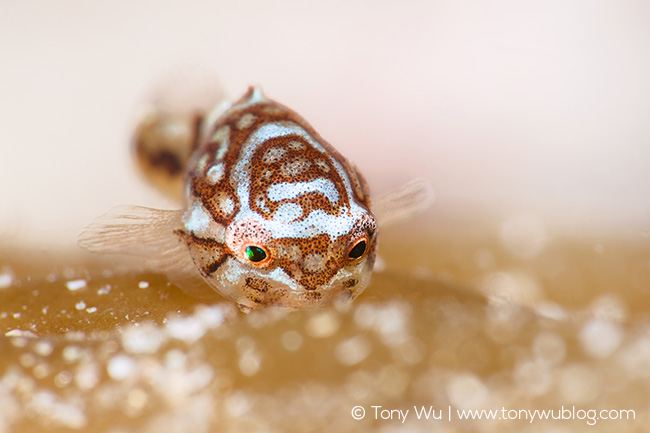
I love the cross-eyed look. You can tell that the little fish is like super-duper-concentrating, probably exactly what I looked like as I did my best to photograph it. Huh, maybe the fish was making fun of me?
All joking aside, it sort of looks like these fish, the babies at least, might be able to turn their eyes forward. “So what?” you say? You do realise that I (occasionally) ramble for a purpose, don’t you?
If they can turn their eyes forward, that might suggest the possibility of binocular vision, which would be super cool. Most fish have eyes on either side of their heads, and thus no binocular vision. The last fish I recall diving with that clearly had this potential was the psychedelic frogfish (Histiophryne psychedelica). There are probably others.
I’m not saying that these fish definitely have binocular vision, but the photo above makes it something to ponder. You need binocular vision in order to go cross-eyed after all.
In case you’re wondering, both E. uenoi and this species are perched on Colpomenia sinuosa algae in my photos. Here is one upside-down inside a clump of algae:
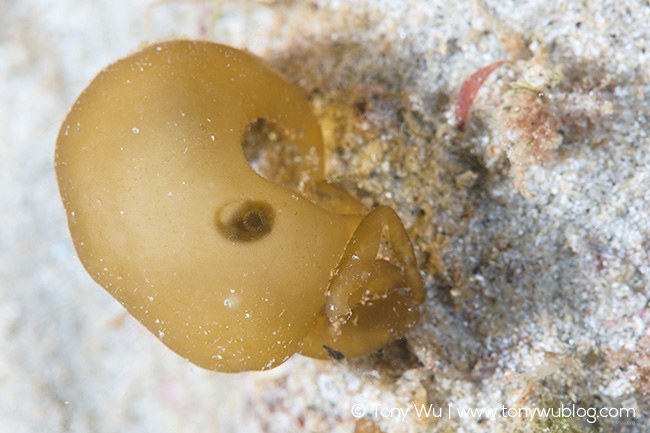
From this vantage, you can see the modified pectoral fin structure that creates a suction cup of sorts, the reason for the “sucker” part of the common name lumpsucker I guess.
One of the interesting things about this species is the variation in appearance of juveniles. Here, for example, is a juvenile expressing contempt in my general direction:
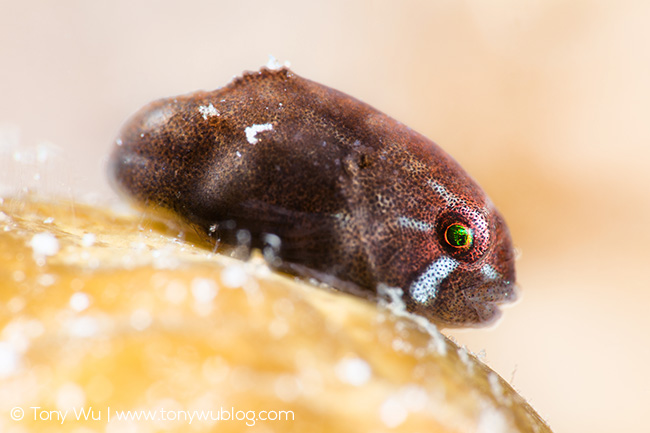
It is the same species, but the pattern/ colouration is markedly different. Not sure why/ how this works, but it’s a thing. Colouration and patterning are not size-dependent. They were all the same frustratingly small size.
This is the same fish above challenging me to a staring contest:
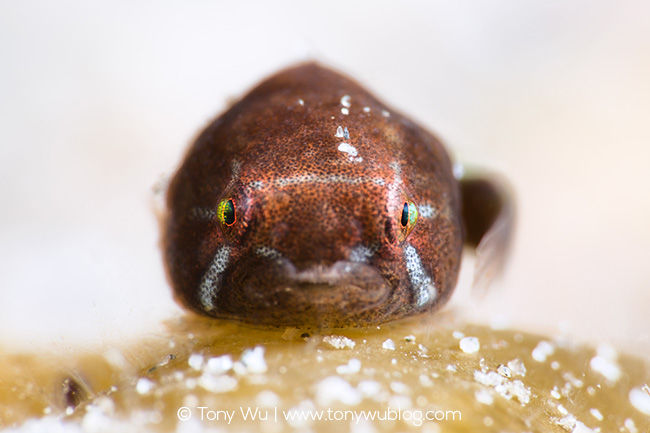
From this angle, you can perhaps see where the “lump” part of the common name lumpsucker derives from.
To round off the images for this species, here’s another individual with its mouth open, no doubt fish-speak for "Go away."
